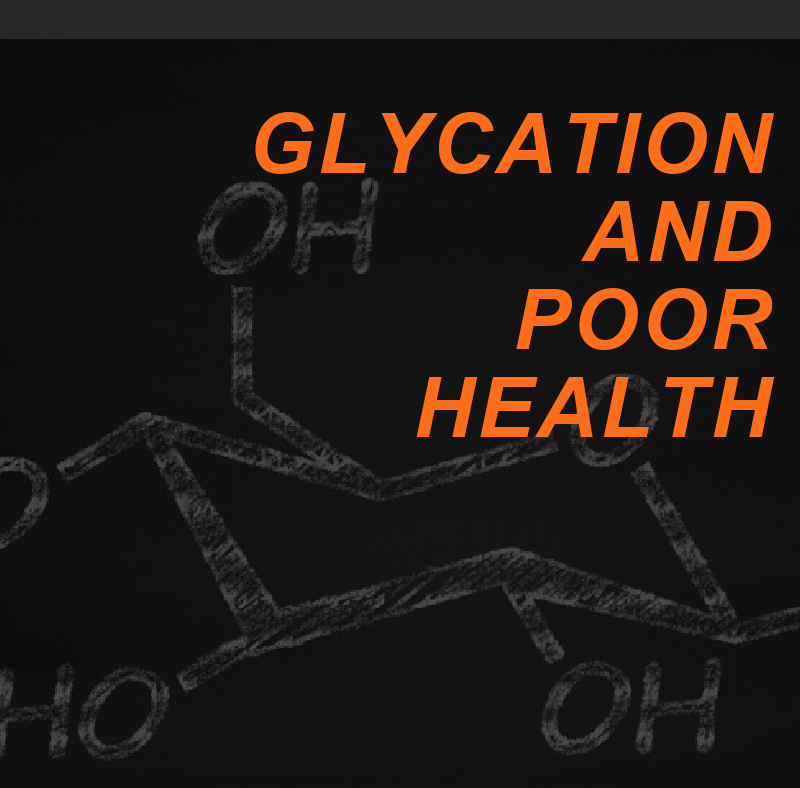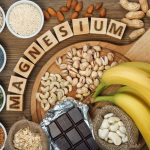
The process of glycation (or, non-enzyme glycosylation) in the body may be an unfamiliar one to most fitness professionals, but one that impacts each of us, but to varying degrees. We can educate our clients on the basics, and coach them on how mindfulness to certain dietary habits can decrease the negative impact of glycation.
Understanding Glycation and Health Impairment
Glycosylation is a reaction in which a carbohydrate, i.e. a glycosyl donor, is attached to a hydroxyl or other functional group of another molecule in order to form a glycoconjugate. In biology, glycosylation usually refers to an enzyme-catalyzed reaction, whereas glycation may refer to a non-enzymatic reaction.
Glycosylation occurs at defined sites on the target molecule and is required for that molecule to function. [By definition: “glycosylation is an important and highly regulated mechanism of secondary protein processing within cells. It plays a critical role in determining protein structure, function, and stability.”]
Glycation, on the other hand, is the result of a sugar molecule, such as fructose or glucose, bonding to a protein or lipid molecule without the controlling action of an enzyme. It will cause physiological imbalances and dysfunction of homeostasis that leads to impaired health.
Glycation can occur inside the body (endogenous glycation) or outside the body (exogenous glycation). Glycation is the haphazard process of sugar-bonding to proteins or lipids that impairs the functioning of biomolecules. [Colin Really, Tyler J. Stewart. Glycosylation in Health and Disease. Nature review Nephrology 15, 346-366. March 2019].
Endogenous Glycation
Endogenous glycation occurs in the bloodstream with absorbed simple sugars: glucose, fructose, and galactose. Glycation accounts for a small proportion of the absorbed sugars with the balance of sugars used for metabolic processes. Fructose and galactose have ten times the glycation activity of glucose. Henceforth, consumption of these two forms of sugars will increase the activity of endogenous glycation.
Exogenous Glycation (Dietary Sources)
Food manufacturers have added Advanced Glycation End-Products (AGEs) to foods, especially in the last 50 years as flavor enhancers and colorants to improve appearance. These foods can include, but are not limited to, donuts, barbecued meats, cake, and dark-colored soda.
Another example includes sugars added to products such as french fries to enhance browning. These sugars are cooked with proteins or fats at temperatures of 120o C (~248o F). The sugar in this process will cause glycation and contributes to the formation of acrylamide (a known carcinogen). Foods with significant browning, carmelization, or with directly added AGEs are proinflammatory and disease-initiating compounds. When ingested, the glycation products are absorbed with an approximate 30% efficiency.
AGE’s and Disease
Advanced Glycation End-Products (AGEs) are the modification of proteins or lipids that become nonenzymatically glycated and oxidized in the bloodstream after contact with aldose sugars. Red blood cells when glycated form glycated hemoglobin (HbA1c) which can lead to Type I or Type II diabetes.
Red blood cells have a turnover of 120 days. Other cells that are longer-lived such as nerves and brain cells and impacted by glycation accumulate substantial damage over time. The clearance of glycated endproducts comprises 30% of material filtered through the kidneys, making cellular damage probable.
- AGEs are more reactive than the sugars they are derived from, and are implicated in many age-related chronic diseases such as: Type I and II diabetes (beta cell damage), cardiovascular disease (endothelial, fibrinogen, and collagen are damaged), Alzheimer’s (amyloidal proteins are side-products of glycated reactions with proteins progressing to AGEs).
- AGEs cause demyelination of nerves, causing peripheral neuropathy.
- AGEs will cause microvascular damage in the retina and can lead to blindness.
- AGEs subject metabolically active cells such as glomeruli in the kidneys, retina cells in the eye, and beta cells in the pancreas to a high risk of damage.
- AGEs cause damage to endothelial cells in blood vessels causing atherosclerosis.
- AGEs cause stiffening of collagen in blood vessel walls leading to hypertension.
Improve Health Outcomes
Summary
Glycation, non-enzyme glycosylation occurs exogenously via food manufacturing and endogenously in the body by the haphazard combination of sugars to proteins and/or lipids forming AGEs that impair the functioning of biomolecules. Fructose and galactose have ten times the glycation activity of glucose. AGEs can lead to type I or Type II diabetes, cardiovascular disorders, dementia, neuropathies, organ impairment; and, cause disregulation of biochemical processes in the body, leading to homeostasis impairment.
Glycated protein cross-links can be broken naturally by a vitamer of vitamin B6 called pyridoxamine, which in the body is metabolized to pyridoxal-5-phosphate. Both pyridoxamine and pyridoxin-5-phosphate are available without prescription. Knowledge is power. Sharing health information with clients will help them make more informed decisions with regard to all aspects of their wellness.







